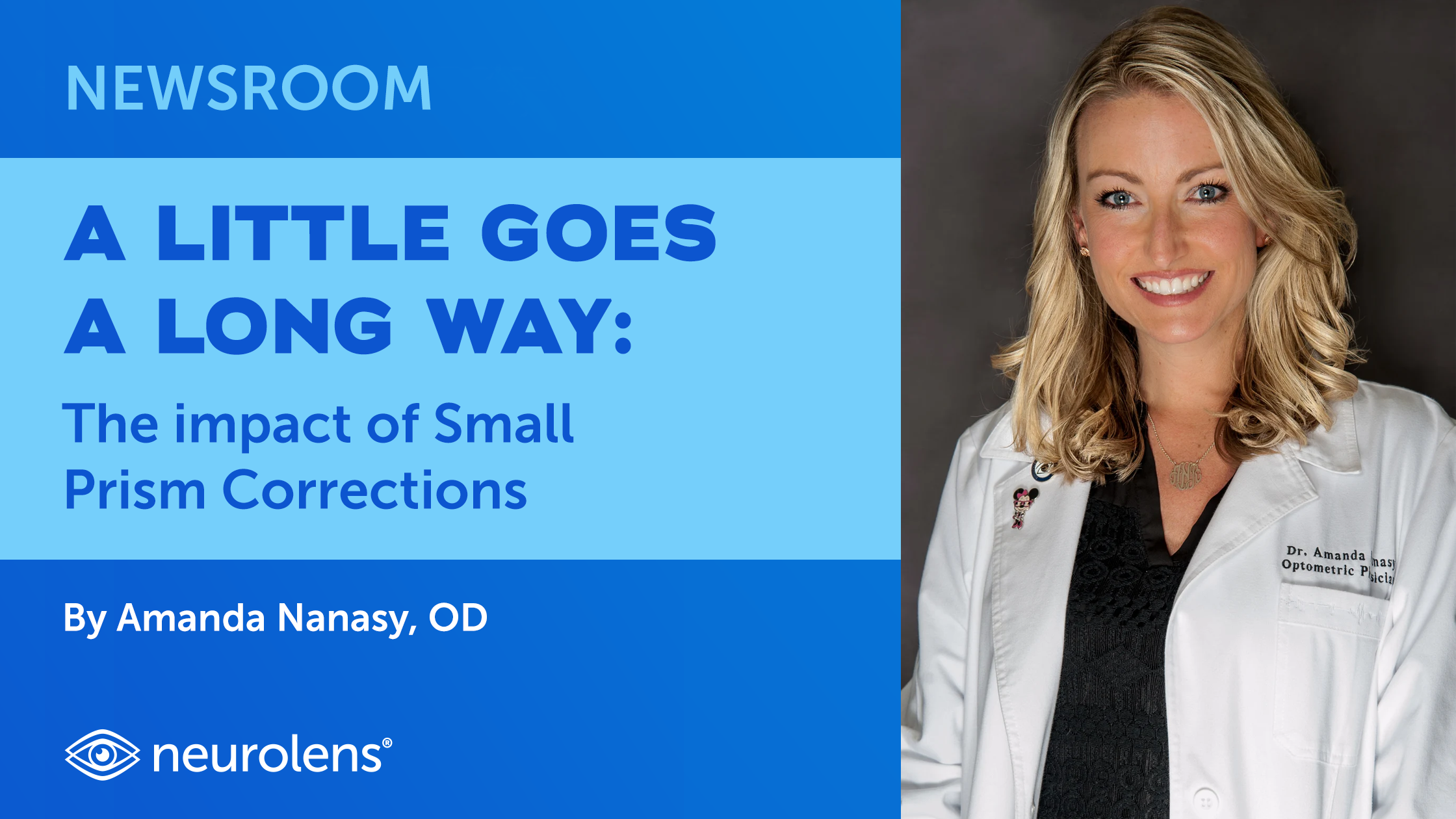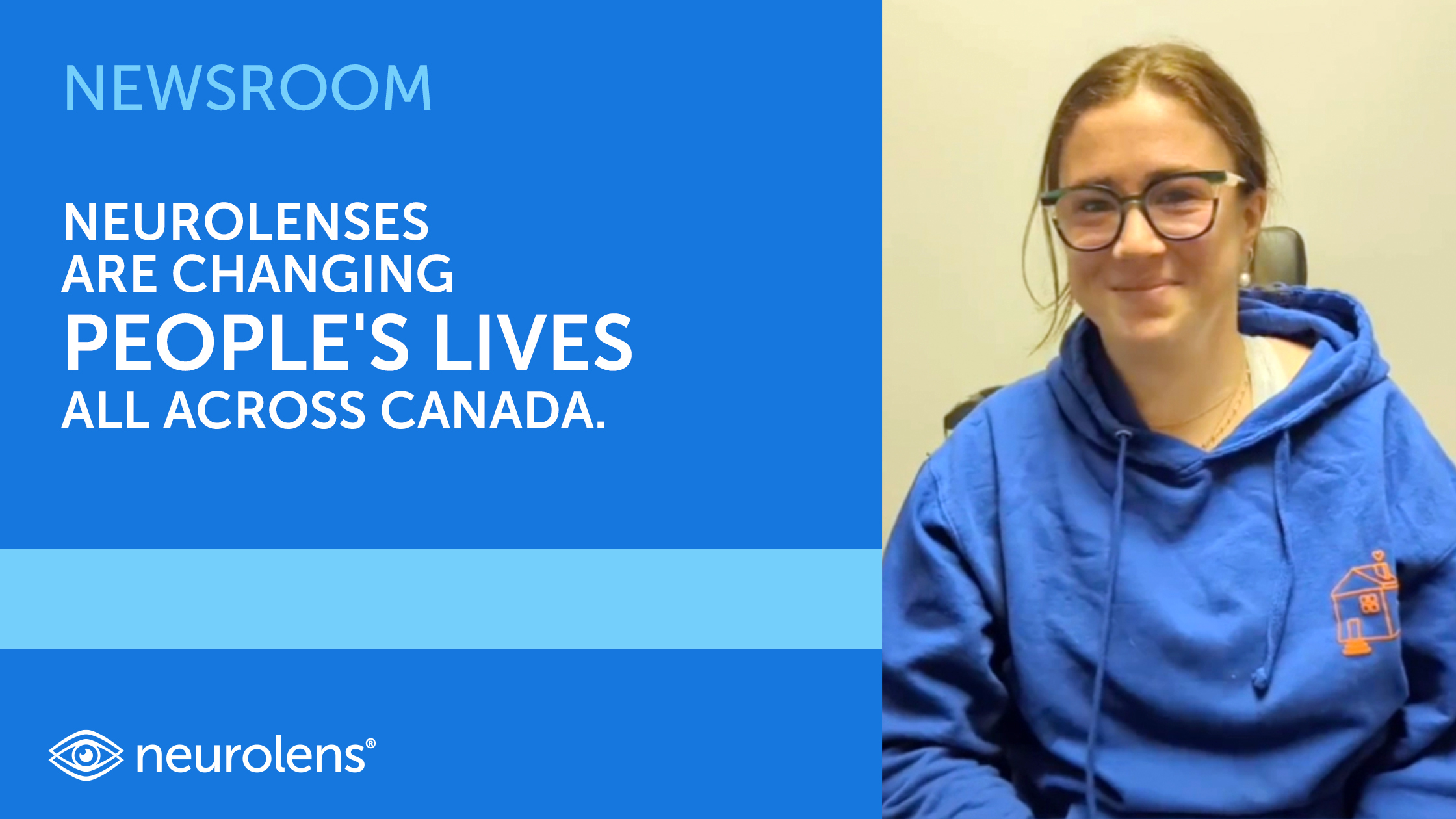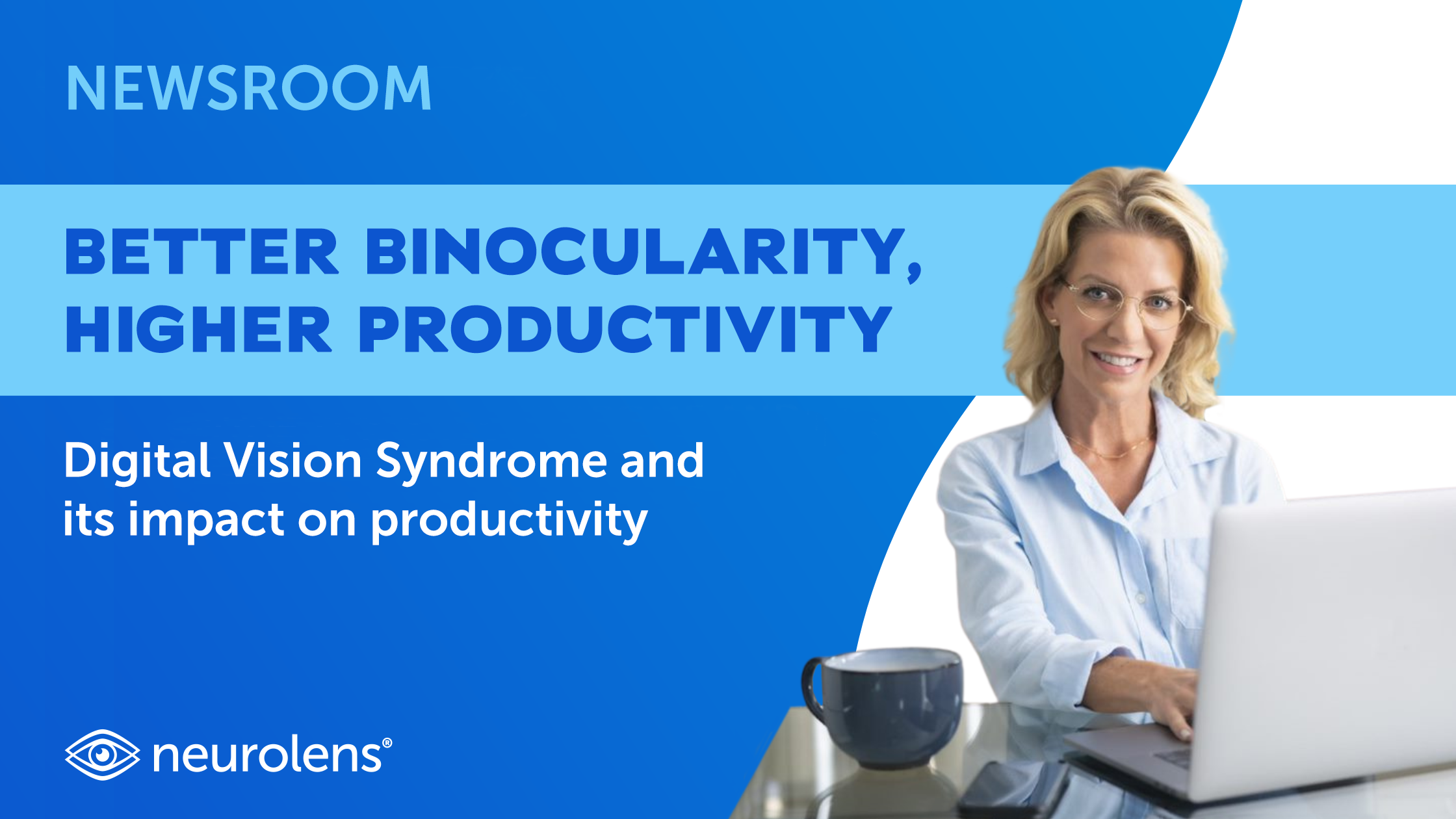
The Future of Prism : How Binocularity is Transforming Eyecare
A Little Goes a Long Way: The Impact of Small Prism Corrections Webinar
A common misconception about binocular vision disorders is that more symptomatic patients tend to exhibit larger phorias. Evidence actually suggests that the magnitude of clinical signs does not correlate with the severity of the symptomology.
A patient with 1PD exophoria and a patient with 10PD exophoria might experience a similar magnitude of eye strain. Furthermore, prescribing precise, appropriate amounts of prism—particularly contoured prism does not lead to high degrees of prism adaptation over time, contrary to common misconceptions.
But prescribing fractional, precise amounts of prism is a challenge. Subjective and nonrepeatable clinical diagnostic tools limit our ability to accurately detect small eye phorias.
In a webinar presented by Review of Optometric Business, and sponsored by Neurolens, Amanda Nanasy, OD, shares the secrets to successfully prescribing prism, and the benefits it can bring to your patients and practice.
.
Watch the full webinar here at Review of Optometric Business.

Amanda Nanasy, O.D.
Dr. Nanasy received her Doctor of Optometry with Professional Honors in May 2010 from Nova Southeastern University (NSU). Since 2009, she has been involved as the primary investigator in a research project with the NSU baseball team titled “Can Vision Training Improve Baseball Players’ Dynamic Visual Acuity and Batting Average.” So far, her work has revealed that training players to focus, relax and converge their eyes has led to more confidence in both tracking the ball and stepping up to the plate.




%20(2).png)

